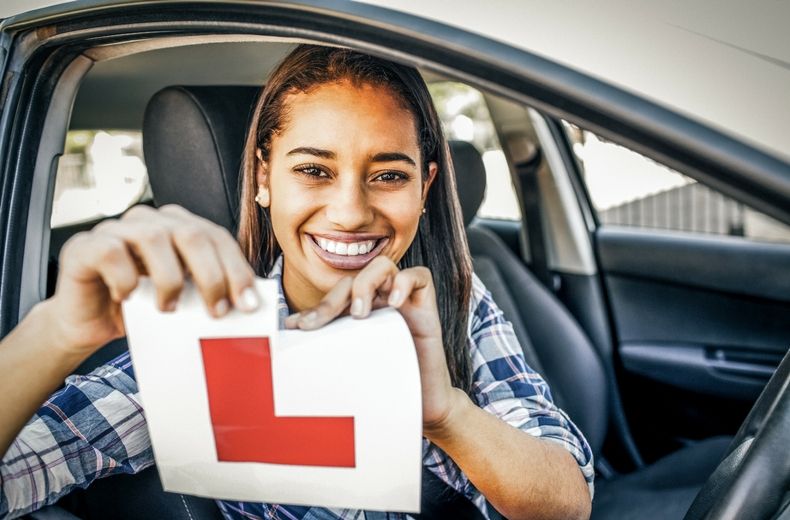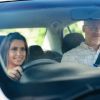Before you can book your test, you will need to apply for your provisional licence, find a good driving instructor and decide if you want to learn to drive in a manual or automatic car.
In this comprehensive guide, we answer your questions about learning to drive and outline all the steps you need to pass first time.
Step one: applying for your provisional driving licence
Before you can even think about driving, some admin needs doing – you need to apply for your provisional driving licence. The process is relatively straightforward, but you can't learn to drive without getting your provisional licence first.
When can you apply for a provisional driving licence?
You can do this at any time once you’re over 15 years and nine months old but it only becomes valid when you turn 16.
What does your provisional licence allow you to do?
With a provisional licence you can:
- At 16 begin the process of learning to ride a moped or light quad bike
- At 17 begin the process of learning to drive a car
You cannot:
- Drive in a car without a driving instructor or someone else who fits the legal criteria.
How do you apply for a provisional licence and how much does it cost?
The easiest way to apply is through the provisional driving licence page on the official GOV UK website.
To get a provisional licence you will need:
- To be able to read a number plate from 20 metres away
- Provide a legitimate form of ID (normally a passport)
- Provide addresses for where you have lived over the last three years
- Pay £34 by credit or debit card
Your provisional licence should arrive within a week.
At the same time, it’s a good idea to start reading the Highway Code and begin familiarising yourself with it in preparation for step four, booking your theory test.
Learner Driver Car Insurance
Only pay for the cover you need until you’ve passed your test. Get learner driver insurance so you can practice outside of your lessons.
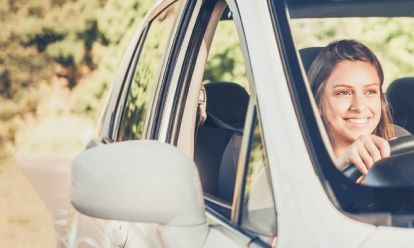

Step two: finding a good driving instructor
Finding a good driving instructor is invaluable. While it might be tempting to save money and ask a friend or relative to teach you, it could be a false economy.
An expert will have a much better idea of what’s expected from you in the test, the ability to improve your skills over time, and could save you from heated arguments with your friends and family in the process.
Also, a fully qualified teacher will have their own car to teach you in which will have dual controls.
Dual controls are where the instructor has their own clutch and brake pedals in the passenger footwell, and are able to take over or help out with the controls if they feel you need it at any point.
The most important thing when picking an instructor is choosing someone who makes you feel comfortable and happy in the driver's seat, remember you may be spending potentially 40 hours in a car together!
If you do choose a friend or family member they will have to be over the age of 21 and have held a licence for at least three years. Read our full guide on teaching someone to drive.
How to find a good driving instructor
The best way of finding a good instructor is through recommendations.
If you’re a young driver, you’ll probably know lots of people who are learning to drive at the same time – ask them if they’d recommend their instructor.
If you cannot find anyone suitable on recommendation then you can use the Approved Driving Instructor page on the Driver and Vehicle Standards Agency's (DVSA) website.
This database locates all of the approved instructors local to your area, all you need to do is type in your post code.
How much should I pay for driving lessons?
How much it costs to learn to drive can vary. Typically, driving instructors charge around £20 to £25 per hour for instruction.
The average learner driver requires around 45 hours of lessons before being test-ready, but everyone learns at different rates.
Should I learn in a manual or an automatic?
When looking for an instructor consider what car they use. Is it a manual or an automatic?
While automatics are easier to drive, you won’t legally be able to drive a manual if you pass your test in an automatic vehicle.
Unless you have a disability that prevents you from driving a manual, a manual licence will offer you more flexibility in the future and you can normally find much cheaper manual cars for your first car. Hire cars are often cheaper and more readily available in manual form, so also bear that in mind.
For more information to help you choose whether you want to go manual or automatic, read our pages advice pages:
Do I need learner driver insurance?
The average learner requires 20 hours of additional practice outside of their driving lessons, so if you’re practicing with family or friends to complement your lessons you may want to consider learner driver insurance.
Learner driver insurance offers flexible short-term cover and can often be purchased by the day, week or month, and in some cases by the hour for learners wishing to practice on a more ad-hoc basis.
This additional practice will normally be done in either yours, a friend's or a parent's car, meaning you will need to be insured as you are behind the wheel without an instructor.
You will also need to be accompanied by a qualified driver who is appropriately insured on the vehicle you’re learning in.
Step three: starting your driving lessons
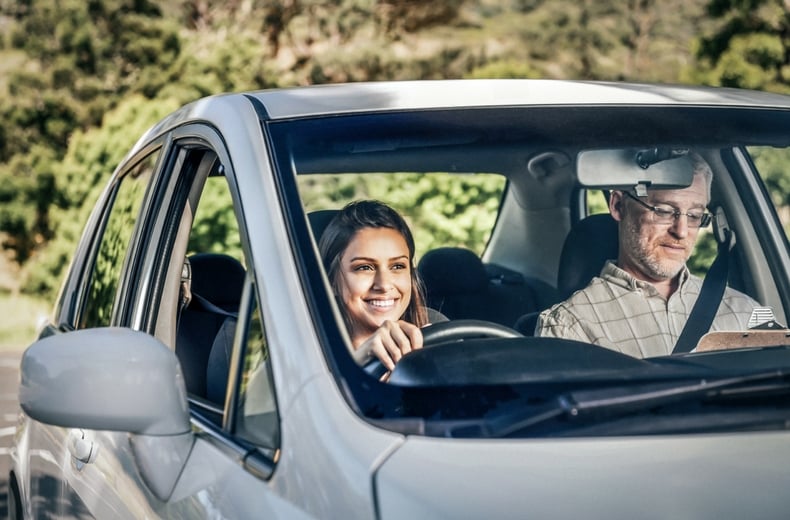
For most people, starting their driving lessons will be the first time they have been in the driver's seat of a car with other cars on the road too, so it can feel a little daunting.
But the right instructor will easily guide you through it and will start you off on very quiet roads.
For the first lesson they will most likely drive you somewhere where they know there won't be too much traffic.
How many lessons do I need?
In the UK, the average learner usually has 20 hours of practice to pass the driving test, in addition to 45 hours of driving lessons. This is only an average though and shouldn't be something you feel you have to compare yourself to.
Some take fewer and some take longer to feel comfortable and ready to take their test – the important thing is to take the test when you are ready, not being the first one out of your friends to pass. Generally, the more lessons you take, the better the driver you will become.
Your instructor will let you know when you are ready, but most of the time you will feel it too – when the time comes you can both come to the decision together and then discuss how best to prepare for your test.
Officially, there is no minimum number of driving lessons you must have before taking the driving test.
- Top 10 driving test questions answered
- How to teach someone to drive
- Intesive driving courses for learners
- Windscreen repair
Should I take an intensive driving lesson course?
Intensive courses (otherwise known as the poorly named 'crash course') will give you the best chance of passing your driving test in the shortest amount of time.
These are normally flexible courses of extended one-on-one tuition with the aim of passing you in as little time as possible.
They typically work to your schedule with an instructor devising a lesson plan or offering you a range of pre-designed plans suited to your budget and availability.
Find out more about intensive driving courses and whether they're right for you.
| Pros | Cons |
|---|---|
| Can teach people to drive in as little as a week from complete novice | Some people may feel rushed and aren't comfortable learning in this type of environment |
| Within the package, most costs for intensive courses will cover everything, including your theory and practical tests | They do involve a high initial price outlay |
| They are perfect if you are in a rush or on a tight schedule, for instance when trying to pass before leaving for uni or starting a job | You need to ensure you have a free block of time to complete - most people have other commitments like work or college to consider |
| Many courses offer a free retest should you in fact fail the practical test | Some people feel pressured to pass under these constraints which affects their ability to perform to the best of their abilities |
| Are usually flexible and will work to your schedule | Do not offer as much flexibility as planning your weekly lessons yourself |
| Some offer residential intensive courses, to ensure there are no distractions to provide complete focus on learning to drive | They are hard work and require a great deal of focus, commitment and dedication |
What should I take with me on my first driving lesson?
For your first lesson you will need:
- Your provisional licence
- A positive, can-do attitude
Six driving lesson tips
- Before you start
Before your first driving lesson, become familiar with The Highway Code.
This will give you a good understanding of the rules of the road before you get behind the wheel.
And most importantly before your first lesson - get a good night’s sleep and make sure you are fresh and ready to learn when your instructor arrives.
- Wear the right footwear
It’s easier to control the pedals wearing comfortable shoes. Heavy boots can make it hard to perfect driving techniques and heels will get scuffed and give you less control. Choose thin, narrow shoes to give you the necessary ‘feel’ on the pedals.
- Practice between lessons
The average learner needs 20 hours of practice to pass the driving test, in addition to 45 hours of driving lessons. Once you’ve started learning, ask your instructor for advice about when you are ready to start practising between lessons.
You can practice driving between lessons while accompanied by anyone who is over 21 years old and has held a full British driving licence for at least three years, but both of you must be insured to drive the vehicle you’re in.
You can get short term learner driver insurance cover here.
Remember to keep things simple – if, for example, you haven’t yet been taught how to tackle roundabouts by your instructor, try to avoid roundabouts during your practice drives.
- Longer and more frequent lessons get you there faster
It is recommended that you book a minimum of one two-hour lesson per week when you start learning to drive.
As you progress you may find that two or more lessons a week suit you better. Your instructor will offer the best guidance on the right pace for you.
- Mock tests are great!
Your instructor will most likely suggest this, but if they don’t, ask to use one of your lessons leading up to your test to do a mock/practice driving test.
This will get you used to the idea of taking a test and ready you for what to expect on the actual day.
Doing two or three mocks will not only make you vastly more prepared for the real test but will put you at ease when you get there too.
- Study for the theory test while you learn to drive
Studying theory and practice at the same time makes learning both easier.
Theory gives lots of hints on the best way of driving and their importance can be underlined when on the road.
When you’re not practising the practical side of driving, swot for your theory test.
Read the Highway Code and take mock tests online.
Learning to drive with a disability
If you have a disability, learn with a driving school that that can cater to your needs.
Specialist driving schools offer purposely adapted cars and trained instructors to aid disabled learner-drivers.
Find out more about driving with a disability.
Black Box Insurance
Want to pay less for your car insurance? Whether you’re a new driver or just looking to reduce costs, we can help.
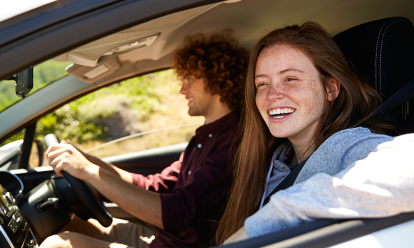

Step four: taking the theory test
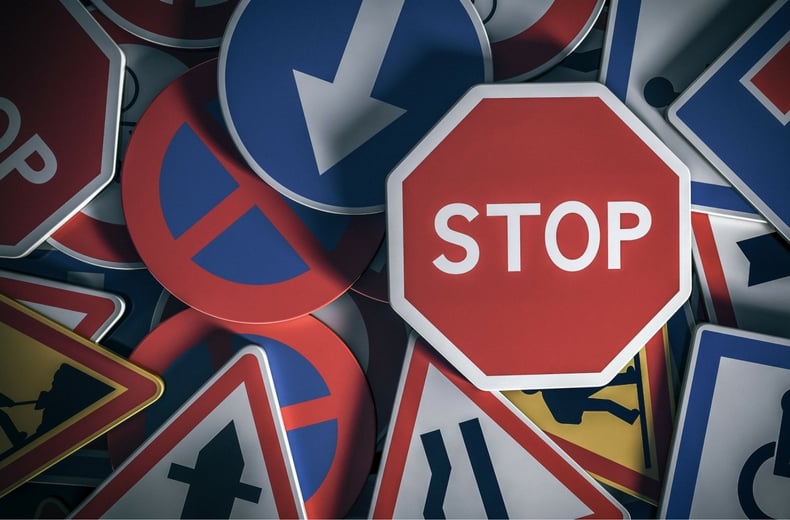
Once you’ve been learning to drive for a little while, your instructor will probably recommend you book your theory test.
You will complete this alongside your practical lessons, so you will have to study in your own time between lessons.
Don't worry though, we will offer tips to help you pass your theory test in the sections below.
How to book your driving theory test and how much will it cost?
- You can book your theory test either:
- Online, through the book your theory test section of the official GOV UK website (DVLA)
- Or over the telephone using a credit or debit card on the number 0300 200 1122
- It costs £23 and there is usually a waiting time of a week or two
- You’ll have to visit your local theory test centre to take your theory test
What does the driving theory test consists of?
A multiple choice test
The first part of the theory test is a computer-based multiple-choice test consisting of 50 questions on the Highway Code.
You’ll have 57 minutes to complete it, and need to get 43 correct to pass.
Make sure you’ve prepared, as you would an exam, and you should stand a very good chance of passing.
A hazard perception test
Once you’ve completed the theory test, you’ll have to take a hazard perception test.
This uses 14 video clips, and you’ll have to click the mouse whenever you spot a hazard developing.
There are 15 hazards to spot, with at least one on each clip and two in one of the clips. The hazard clips are silent.
When you spot a hazard developing you can click either the left or right mouse button.
The earlier you spot it the more points you will get. You can score between zero and five with a maximum of 75 (i.e.. 15 hazards x 5) and to pass you need a score of 44.
You’ll find out straight away whether you’ve passed – and once you have, you’ll be able to take your practical test.
How to practice for your driving theory test
There are a number of different ways to practice for your driving theory test. From sites to apps we have outlined the best resources below so you can find the right tools to suit you.
You can take free driving theory mock tests here on the official Government site.
You can also brush up on your road signs knowledge on our very own road signs quiz page.
As for apps, Driving Theory Test UK is a great place to start, with all necessary learning materials, hazard perception clips and Highway Code info included. You can download it here:
Step five: taking your practical test
You’ve had plenty of lessons, passed your theory test and your instructor thinks you’re ready to take your practical test, let's start with the booking.
How to book the practical driving test and how much does it cost?
This is an eight-step online process which only takes five to ten minutes.
The steps you will be guided through ensure you will find your nearest local test centre and the earliest available time slot, there is normally up to a four week waiting list but this can increase depending on how busy the appointments system is.
What details do you need to book your driving test?
Before clicking on the link below and starting your booking process you will need the following items:
- Your UK driving licence number (found on your provisional licence)
- A credit or debit card - it costs £62 on weekdays and £75 on weekends
- Your driving instructor’s personal reference number - this is to check if they’re available should you wish them to attend the test with you - which is often recommended
You can book your practical test online. You can also book your driving test over the phone by calling the DVSA on 0300 200 1122.
How long is the waiting list for a driving test?
There isn't a waiting list for a driving test but when you look for a slot and there might not be one available for a few weeks. To get your driving test quicker, there is the option on the GOV website to look for driving test cancellations. This will allow you to potentially book an earlier appointment if someone else cancels their appointment before yours.
There is no alert system for this so if you are eagerly awaiting the chance to book one of these 'cancellation appointments' you will need to check their availability regularly, we suggest daily.
'Show me, tell me'
An integral part of the practical driving test is the 'show me, tell me' questions.
If you have been learning to drive and are getting ready to take your test – then there will be two safety questions put to you by your examiner.
For the ‘tell me’ question you’ll need to explain how you’d carry out a safety task. You’ll also need to answer a ‘show me’ question. This is where you’ll have to demonstrate how you would carry out a safety task.
When is the best time to book a driving test?
There’s plenty of discussion about when you should book a test to give yourself the best chance of success depending on the season, the day of the week and even the time of day. But what’s the truth?
In terms of season, taking your test in winter obviously means more chance of icy roads or snowfall, so you might want to wait until the weather warms up a little.
Taking your test on a weekday may mean navigating rush-hour and school-run traffic, but remember that Saturday tests are more expensive.
Generally speaking, you have more chance of passing a test outside of rush hour as there are fewer cars on the road and less congestion – meaning less likelihood of being distracted by those around you.
If this sounds like you, try and book a slot in the middle of the morning or afternoon, or in summer after the evening rush hour.
Inevitably, the best driving test slot depends on you.
If you feel confident about driving on wintry roads during the morning rush hour, then you may be fine booking your test for then.
So, think carefully and choose what’s best for you.
What's the best thing to do before your driving test to keep calm?
Here are our top tips on staying calm before you take your driving test:
- Go for a walk - exercise releases endorphins in your brain which help you feel relaxed
- Go easy on the caffeine - it can have the opposite effect
- Give yourself plenty of time - rushing to get to your test isn't going to make you feel calm
What do you need to take with you for your driving test?
You’ll need to bring your:
- Theory test pass certificate
- Provisional driving licence
How long does the driving test last?
The driving test lasts around 40 minutes. If you are taking an extended driving test, it'll last for 70 minutes. Once you have completed the route, you will find yourself back at the driving test centre car park.
What does the driving test involve?
There are five steps to your practical driving test.
Changes to the driving test were made in December 2017, these have been reflected below.
Five parts of the driving test
- Sight check
First, you’ll be asked to read a number plate of a random car from 20 metres away to check your eyesight.
If you cannot do this you cannot take your test.
- Show me tell me questions
Then your examiner will ask you two ‘tell me’ questions about vehicle checks you should carry out before driving, such as: ‘tell me how you would check that the headlights and tail lights are working’, before you get in the car
Later in the test, while you are driving, your examiner will ask you a ‘show me’ question, such as: ‘show me how to demist your windscreen’.
Here is a full list of the possible show me tell me questions.
- General driving ability
You’ll drive in various road and traffic conditions, but not on motorways.
The examiner will give you directions that you should follow. Driving test routes aren’t published, so you can’t check them before your test.
You’ll also be asked to safely pull over and safely pull away during this part of the test, this may include:
- Normal stops at the side of the road
- Pulling out from behind a parked vehicle
- A hill start
You might also be asked to carry out an emergency stop.
- Reversing your vehicle
The examiner will ask you to do one of the following exercises:
- Parallel-park at the side of the road
- Park in a bay – either driving in and reversing out or reversing and driving out (your examiner will tell you which to do)
- Pull up on the right-hand side of the road, reverse for two car lengths and rejoin the traffic
- Independent driving
For this section roughly a fifth of drivers taking their test will be asked to drive for about 20 minutes by following either:
- Traffic signs
- A series of verbal directions
- A combination of both
You are not allowed to use a sat nav.
The majority will be asked to follow directions using a sat nav, however.
The driver will have to follow directions for around 20 minutes. Although, if you do get confused, you can ask the examiner for confirmation of where you’re going.
If you make a mistake and drive in the wrong direction, you will not be penalised unless you make a fault while doing so.
You won’t find out how you’ve done until you get back to the test centre, when the examiner will discuss his/her observations with you.
You’ll then be given a pass or fail certificate.
How many minors and majors can I get?
You can make up to 15 minors faults and pass your driving test, however, one major fault will qualify for an instant fail.
What are the most common driving test mistakes?
According to the DVSA these are the most common mistakes, since the new test came into effect in 2017:
- Junctions – observation
- Mirrors – change direction
- Control – steering
- Junctions – turning right
- Move off – safely
- Response to signs – traffic lights
- Move off – control
- Positioning – normal driving
- Response to signs – road markings
- Reverse park – control
Failing your driving test
There are is no limit on the number of driving tests you can take. If you don't pass, you will need to wait 10 days before you can re-book your driving test.
Can I drive home from the test centre if I pass?
You can drive immediately after you pass your test, as long as you are correctly insured for the car you want to drive.
Your learner driver insurance will cease as soon as you have passed, so you’ll need to take out a full annual car insurance policy if you wish to drive away from the test centre.
As a first time driver your insurance will likely be quite expensive, Black Box car insurance can help you save money as it rewards safe driving, and can help to bring down your future premiums. Or you might want to consider our temporary car insurance to cover you for borrowing a car.
You'll also want complete peace of mind if your vehicle breaks down. Luckily the RAC has a wide range of breakdown cover packages available, which will give you cover at home and at the roadside as standard.
Driving test FAQs
- After passing my test, how long until I get my full licence?
Once you’ve passed, you (or your examiner) can arrange to send off your provisional (green) licence to the DVLA, who will then upgrade it to a full (pink) driving licence.
This process can take up to three weeks in total, although you don’t have to wait until you’ve received your new licence to start driving – you can drive straight away as long as your car is taxed and insured!
If you haven’t received your licence within three weeks, contact the DVLA.
- How long until I can drive after passing my driving test?
If you’ve just passed your test, you’ll be pleased to know you are legally able to drive home from the test centre should you choose to, as long as your car is taxed and correctly insured.
That said, following the adrenaline rush of actually passing your test, you may prefer being driven home by your examiner so you’re not too distracted on the journey home.
- Can I change my driving test?
Yes, you can – simply use the Gov.uk tool to move your driving test date. You can also use this tool to find an earlier test date (also known as a cancellation appointment).
You’ll need your driving licence number and driving test reference number (or theory test pass certificate number), which will be on the letter you received when you passed your theory test.
- How many times can I change my driving test date?
Using the Gov.uk tool, you can reschedule your driving test up to six times. Any more than that and you’ll need to cancel your test completely and re-book it.
- How can I pass my driving test quickly?
There is no sure-fire short-cut to passing your driving test – you simply need to build up the experience and confidence behind the wheel to prove to an examiner that you’re good enough to pass your test.
However, if you want to quicken the process you might want to consider taking an intensive driving course, which includes a high number of lessons over a short period of time – often a couple of weeks or even a few days.
For more information on intensive driving courses and to discover whether they’re right for you, read our complete guide. - After passing my driving test, when can I drive on a motorway?
Straight away – there are no restrictions on motorway driving for newly qualified motorists.
If you’re not feeling confident about driving on motorways yet, even though you’ve passed your test, you may want to consider a Pass Plus course.
However, learner drivers are now allowed to drive on motorways so you can get some practice in while you’re still learning.
- How long after failing my driving test do I have to wait before taking it again?
If you fail your driving test, you can book another one straight away. However, you will have to pay again, and you can only choose a date at least 10 working days away from the original test date.
- Why do I keep failing my driving test?
There could be a number of reasons you keep failing your test, from bad luck with congestion to a simple mistake when making a manoeuvre. But it’s important you identify what you’re weakest on and work on that.
It might sound simple, but when it comes to driving, practice really does make perfect. So, get out behind the wheel and practice until you feel comfortable driving along roads used in the test route and undertaking all the manoeuvres.
If you get nervous in a test situation, practising on the test route can help, as can getting used to driving with people other than your instructor or examiner, such as a family member who is legally appropriate.
- Is it easier to pass an automatic driving test?
That depends on your ability in an automatic car. Driving an automatic may seem simpler as you don’t have to worry about changing gears but you still need to be well-versed in all aspects of the practical test to stand a chance of passing.
Remember too that if you pass in an automatic car, you won’t then be qualified to drive a manual.
- Is a driving test hard?
Driving tests are designed to ensure learner drivers have the skills and knowledge to be able to drive without any outside instruction or direction, so they’re supposed to be rigorous.
There are plenty of variables in a test situation – from congestion and traffic to weather and nerves – so the best way to make things as easy as possible is to practice ahead of time to ensure you’re as prepared as you can be.
- Does driving get easier?
The more you practice a certain skill, the better and more confident you become – and driving is no different. So the best way to make driving seem easier is to get behind the wheel and practice as much as you can.
- What happens if you fail your driving test three times?
There is no set limit on the amount of times you can attempt your driving test, so if you’ve failed three times, you can choose to keep trying if you want to and can afford it.
- How many people pass their driving test first time?
According to stats from the DVSA, just 47% of drivers passed their test on the first attempt, meaning you’re more likely to fail the first time round. So, don’t get too disheartened if you have to have more than one attempt at passing.
Learner Driver Car Insurance
Only pay for the cover you need until you’ve passed your test. Get learner driver insurance so you can practice outside of your lessons.


How does our breakdown cover measure up?

SALE – up to 40% off*
Roadside & Recovery from £5.29 a month*
• Cheaper than AA Price Promise or we’ll beat by 20%^
• We get to most breakdowns in 60 mins or less
• Our patrols fix 4/5 breakdowns on the spot


